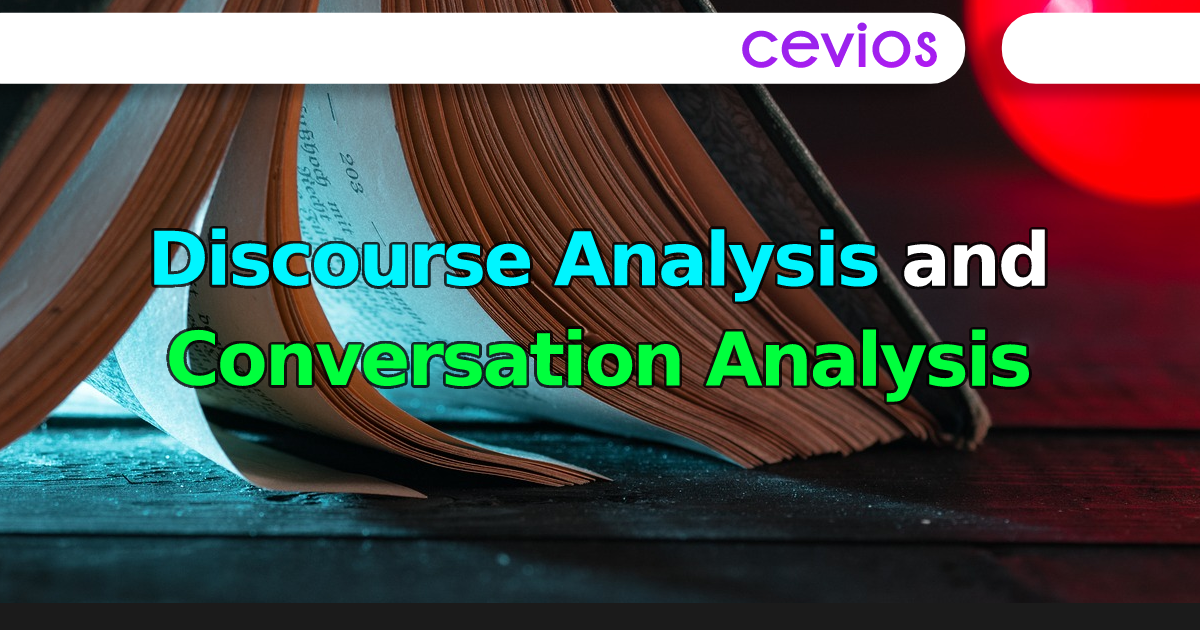Discourse Analysis and Conversation Analysis
- Analysing Discourse
- Methods
- Four core features of Discourse Analysis
- Narrative analysis
- Critical Discourse Analysis
- Interactional Sociolinguistics
- Conversation Analysis
- CA and “Membership categories”
- Discursive Psychology
- An example of an eclectic Discourse Analysis
- Concluding Comments: Discourse analysis means doing analysis
- Further Reading
- References to sources cited in the main text
- Transcription Symbols for the Conversation Analysis extracts
- Contact
- Citation
- Copyright License
Analysing Discourse
“Discourse” means what people say or write. Scholars might want to look into what people say or write for many reasons: and their particular reason will play a large part in deciding just what sort of saying and writing they choose to study, and what methods they use to do so.
Students of history, cultural and media studies, and politics, among other disciplines, will want at times to identify a “discourse” as a collection of metaphors, allusions, images, historical references and so on that populate some cultural phenomenon (the discourse of modernity, for example, or the discourse of cyberculture, or the discourse of Human Resource Management; all current scholarly projects). That way of looking at discourse is more static than those I review in this chapter, where discourse is taken to be social action made visible in language. The sort of discourse analyst I talk about in this chapter is a social scientist: she or he sees discourse as an organisation of talk or text that does something, in the broad social world, or in the immediate interaction, or in both.
What kind of social action? Different ones, according to the interests of the analyst. The familiar way of setting out this difference is to range the interests from global to local. As we shall see later on, this distinction is itself a matter of dispute. But for the moment let us keep with it. At the more global end, discourse analysts can be interested in actions at the overarching level of social regulation, expressed though official and unofficial discourses like laws, media coverage or advertising texts; actions that have their effect not just in what is explicitly said, but what the analyst finds left unsaid. At that level, those doing the action (and those suffering it) may be classes of people, or ‘society’ in general. At the local end, the analyst might be interested in discourse that acts at the level of interaction, through conversationalists’ activities, realised in the allocation, organisation and internal design of turns at talk. Here, doers and sufferers are visible in the scene.
Methods
There is no lack of methods available to discourse analysts once they have decided where their interests lie. Since the “linguistic turn” in the social sciences of the nineteen seventies, qualitative methods textbooks have laid out an increasingly varied menu of discourse analytic methods, which have over the years moved from novel and marginal to familiar and central. Picking a method among these is apparently straightforward, once analysts have a clear idea of what interests them. In table 1, I range interests alongside appropriate methods.
Table 1: Discourse analytic methods and data according to researchers’ interests
| what actions are to be revealed | candidate theory / method | typical data |
| Personal meaning-making | Narrative Analysis, Interpretative Phenomenological Analysis | interviews, diaries, autobiographies, stories |
| Imposing and managing frames of meaning and identities | Interactional Sociolinguistics, Ethnography of speaking | audio and video recordings, ethnographic observations |
| Accomplishing interactional life in real time | Conversation Analysis | audio and video recordings |
| Displaying and deploying psychological states; describing the world and promoting interests | Discursive Psychology | audio and video recordings; texts |
| Constituting and representing culture and society | [Generic] Discourse Analysis | texts, interviews |
| Constituting and regulating the social and the political world; the operation of power | Critical Discourse Analysis | official and unofficial texts; speeches; media accounts and representations; interviews |
Students of discourse analysis will recognise that the column headings in Table 1 should only be used as a convenience, because I have pretended that one can just start with a simple notion of ‘what actions are to be revealed’, list them, then read off the corresponding theory, method and data. In fact, of course, theory and method have a large say in calling something an ‘action’ in the first place, and what counts as evidence for that action; so these three solid apparently columns are better thought of as fuzzy threads twined around each other. Indeed, not even the rows are discrete; they too are harder to separate than the simple table suggests. All that will become clearer as we see examples of discourse analytic work in practice.

